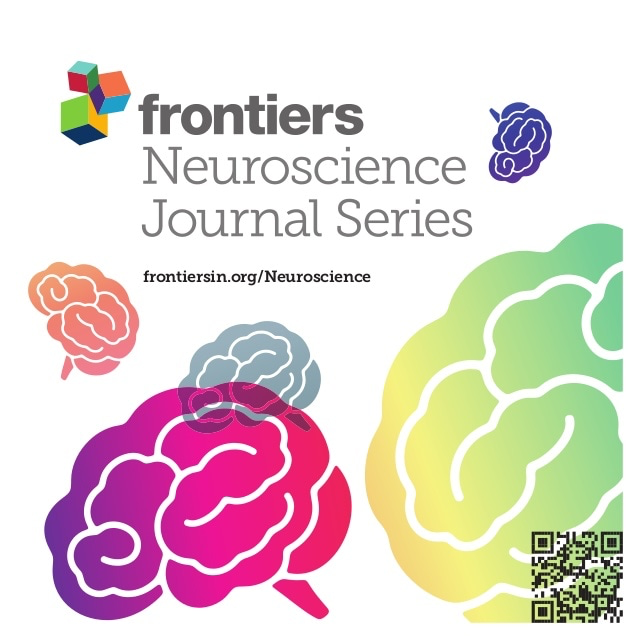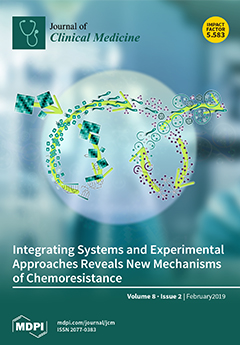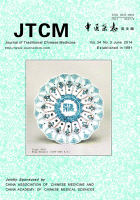fMRI Study
How to submit an article:
- Registered users can submit any published journal article that has a unique DOI (Digital Object Identifier) name or link to Research Hub.
- For example, you can paste the full DOI link:
https://doi.org/10.1109/5.771073or just the DOI name:10.1109/5.771073into the field above and click submit. - The person who is first to submit a valid article to Research Hub will forever be credited for it, and every article submission earns you +6 Research Points.
Related Topics
Published research studies are articles that present the findings of original research that has undergone a peer-review process and has been made publicly available in scholarly journals, books or other media.

Brain Activities Responding to Acupuncture at ST36 (zusanli) in Healthy Subjects: A Systematic Review and Meta-Analysis of Task-Based fMRI Studies
2022 Jul 22 Frontiers in Neurology Huang H, Yue X, Huang X, Long W, Kang S, Rao Y, et al.
Acupuncture at ST36 in healthy individuals positively activates the opercular part of right inferior frontal gyrus (IFG.R), left superior temporal gyrus (STG.L), and right median cingulate/paracingulate gyri (MCG.R). The left olfactory cortex may exhibit positive needle retention time-dependent activities.
Systematic Review Meta-Analysis fMRI Study
Regulatory Effects of Acupuncture on Emotional Disorders in Patients With Menstrual Migraine Without Aura: A Resting-State fMRI Study
2021 Oct 04 Frontiers in Neuroscience Yutong Zhang, Ziwen Wang, Jiarong Du, Jixin Liu, Tao Xu, Xiao Wang, et al.
True acupuncture (TA) had a relatively better effect in reducing the frequency of migraine attack than sham acupuncture (SA). The two therapies have different modulation effects as TA regulates emotional disorders by modulating the frontal-limbic regions, and SA may modulate pain perception through the placebo effect on insula and by indirectly regulating emotional disorders.
Randomised Controlled Trial Acupuncture
Acupuncture Treatment Associated with Functional Connectivity Changes in Primary Dysmenorrhea: A Resting State fMRI Study
2021 Oct 15 Journal of Clinical Medicine Tu CH, Lee YC, Chen YY, Chen CM, Lu WC, Chen YH, et al.
These results indicated that verum acupuncture may intercept the altered functional connectivity (FC) in descending pain modulation systems in primary dysmenorrhea (PDM).
Randomised Controlled Trial Acupuncture
Magnetic Resonance Imaging Studies on Acupuncture Therapy in Depression: A Systematic Review
2021 Aug 20 Frontiers in Psychiatry Zhang J, Wu X, Nie D, Zhuo Y, Li J, Hu Q, et al.
The MRI analytical methods are mainly (fractional) amplitude of low-frequency fluctuation (fALFF/ALFF) and functional connectivity (FC), whereas a small subset of studies used voxel-based morphometry (VBM) and diffusion tensor imaging (DTI). The most consistent functional MRI (fMRI) results showed increased N-acetylaspartate/creatine (NAA/Cr) ratios, increased ALFF in the right precuneus, decreased ALFF in the inferior frontal gyrus (IFG), and increased FC of the anterior cingulate cortex (ACC). In contrast, no significant neurological changes were identified in any of the DTI or VBM studies.
Systematic Review Depression fMRI Study
Immediate Analgesic Effect of Acupuncture in Patients With Primary Dysmenorrhea: A fMRI Study
2021 May 24 Frontiers in Neuroscience Yanan Wang, Jing Xu, Qing Zhang, Qi Zhang, Ya Yang, Wei Wei, et al.
These findings support the importance of rostral anterior cingulate cortex (rACC)–left precentral gyrus resting-state functional connectivity (FC) in the modulation of the intensity of primary dysmenorrhea (PDM) pain through acupuncture, which may shed light on the central mechanism of acupuncture in the treatment of PDM.
Randomised Controlled Trial Acupuncture Period PainResearch insights are moderated by the Research Hub team and offer an at-a-glance overview of interesting research findings.

2015 Journal of Traditional Chinese Medicine
Acupuncture, as an adjuvant therapy or monotherapy, can protect and restore dopaminergic neurons, bearing positive implications for the Parkinson's disease treatment.
Review Article Acupuncture Parkinson's Disease
Acupuncture for Parkinson's Disease: a review of clinical, animal, and functional Magnetic Resonance Imaging studies
Danqing X

2012 PLOS One
Most studies suggest that acupuncture can modulate the activity within specific brain areas, and the evidence based on meta-analyses confirmed some of these results.
Systematic Review Acupuncture
Characterizing Acupuncture Stimuli Using Brain Imaging with fMRI - A Systematic Review and Meta-Analysis of the Literature
Huang, W., Pach, D., Napadow, V., et al.
Review Articles
Review articles summarise and critically evaluate the current state of research on a specific topic or field by synthesising multiple primary research studies.

Brain Activities Responding to Acupuncture at ST36 (zusanli) in Healthy Subjects: A Systematic Review and Meta-Analysis of Task-Based fMRI Studies
2022 Jul 22 Frontiers in Neurology Huang H, Yue X, Huang X, Long W, Kang S, Rao Y, et al.
Acupuncture at ST36 in healthy individuals positively activates the opercular part of right inferior frontal gyrus (IFG.R), left superior temporal gyrus (STG.L), and right median cingulate/paracingulate gyri (MCG.R). The left olfactory cortex may exhibit positive needle retention time-dependent activities.
Systematic Review Meta-Analysis fMRI Study
Magnetic Resonance Imaging Studies on Acupuncture Therapy in Depression: A Systematic Review
2021 Aug 20 Frontiers in Psychiatry Zhang J, Wu X, Nie D, Zhuo Y, Li J, Hu Q, et al.
The MRI analytical methods are mainly (fractional) amplitude of low-frequency fluctuation (fALFF/ALFF) and functional connectivity (FC), whereas a small subset of studies used voxel-based morphometry (VBM) and diffusion tensor imaging (DTI). The most consistent functional MRI (fMRI) results showed increased N-acetylaspartate/creatine (NAA/Cr) ratios, increased ALFF in the right precuneus, decreased ALFF in the inferior frontal gyrus (IFG), and increased FC of the anterior cingulate cortex (ACC). In contrast, no significant neurological changes were identified in any of the DTI or VBM studies.
Systematic Review Depression fMRI Study
Acupuncture for Parkinson's Disease: a review of clinical, animal, and functional Magnetic Resonance Imaging studies
2015 Dec Journal of Traditional Chinese Medicine Danqing X
Review Article Acupuncture fMRI Study Parkinson's DiseaseAcupuncture, as an adjuvant therapy or monotherapy, can protect and restore dopaminergic neurons, bearing positive implications for the Parkinson's disease treatment.

Characterizing Acupuncture Stimuli Using Brain Imaging with fMRI - A Systematic Review and Meta-Analysis of the Literature
2012 Apr 9 PLOS One Huang, W., Pach, D., Napadow, V., et al.
Systematic Review Meta-Analysis fMRI Study AcupunctureMost studies suggest that acupuncture can modulate the activity within specific brain areas, and the evidence based on meta-analyses confirmed some of these results.
Clinical Trials
Clinical trials are research studies that involve people and are conducted to evaluate the safety and efficacy of new treatments or interventions, such as drugs, medical devices, or behavioural therapies.

Regulatory Effects of Acupuncture on Emotional Disorders in Patients With Menstrual Migraine Without Aura: A Resting-State fMRI Study
2021 Oct 04 Frontiers in Neuroscience Yutong Zhang, Ziwen Wang, Jiarong Du, Jixin Liu, Tao Xu, Xiao Wang, et al.
True acupuncture (TA) had a relatively better effect in reducing the frequency of migraine attack than sham acupuncture (SA). The two therapies have different modulation effects as TA regulates emotional disorders by modulating the frontal-limbic regions, and SA may modulate pain perception through the placebo effect on insula and by indirectly regulating emotional disorders.
Randomised Controlled Trial Acupuncture
Acupuncture Treatment Associated with Functional Connectivity Changes in Primary Dysmenorrhea: A Resting State fMRI Study
2021 Oct 15 Journal of Clinical Medicine Tu CH, Lee YC, Chen YY, Chen CM, Lu WC, Chen YH, et al.
These results indicated that verum acupuncture may intercept the altered functional connectivity (FC) in descending pain modulation systems in primary dysmenorrhea (PDM).
Randomised Controlled Trial Acupuncture
Immediate Analgesic Effect of Acupuncture in Patients With Primary Dysmenorrhea: A fMRI Study
2021 May 24 Frontiers in Neuroscience Yanan Wang, Jing Xu, Qing Zhang, Qi Zhang, Ya Yang, Wei Wei, et al.
These findings support the importance of rostral anterior cingulate cortex (rACC)–left precentral gyrus resting-state functional connectivity (FC) in the modulation of the intensity of primary dysmenorrhea (PDM) pain through acupuncture, which may shed light on the central mechanism of acupuncture in the treatment of PDM.
Randomised Controlled Trial Acupuncture Period PainStudy Protocols
Published study protocols are detailed plans that outline the objectives, methodology, statistical analyses, and organisation of a research study that have been made publicly available for others to review and use as a reference.
Presentation Slides

Review Article
Acupuncture, as an adjuvant therapy or monotherapy, can protect and restore dopaminergic neurons, bearing positive implications for the Parkinson's disease treatment.
Danqing X

Systematic Review
Most studies suggest that acupuncture can modulate the activity within specific brain areas, and the evidence based on meta-analyses confirmed some of these results.
Huang, W., Pach, D., Napadow, V., Park, K., Long, X., Neumann, J., Maeda, Y., Nierhaus, T., Liang, F., & Witt, C. M.
Executive Summary
Write an executive summary in the form of a blog article on the topic of "Research into Chinese medicine treatment for fMRI Study" summarising the research below and using language that can be easily understood by patients and avoiding medical jargon using a professional and caring tone of voice.
Write an executive summary in the form of a blog article on the topic of "Researched Chinese medicine treatments for fMRI Study" summarising the research below in an objective and easy to understand way, and using language that can be easily understood by patients. Group the article into Chinese medicine treatments first, followed by nutrition and other treatments. Avoid using medical jargon and use a professional and caring tone of voice.
Write me a concise but easy to understand executive summary on the topic of "Chinese medicine treatments for fMRI Study" based on the following research that I will give you. Your summary should be 2 paragraphs long in Australian English spelling and include references to the studies.
A Review Article published in 2015 in the journal Journal of Traditional Chinese Medicine found that Acupuncture, as an adjuvant therapy or monotherapy, can protect and restore dopaminergic neurons, bearing positive implications for the Parkinson's disease treatment. Methodologically, animal studies were used to investigate the effects of acupuncture treatment on Parkinson's disease. An examination was conducted to see if the treatment was neuroprotective, if it could protect dopaminergic neurons from degeneration, and restorative, if it could restore tyrosine hydroxylase positive dopaminergic terminals in the striatum. These pathways were monitored at both molecular and cellular levels. The research also looked into whether the protection was mediated through the same mechanisms as other neuroprotective agents such as anti-oxidative stress, anti-inflammatory, and anti-apoptotic pathways. The results indicated that acupuncture was not only neuroprotective and restorative, but also seen to improve motor performance in animal models of Parkinsonism. The protective effect appeared to be mediated through common mechanisms of other neuroprotective agents, while restoration of function involved activation of certain compensatory brain regions to correct the imbalances stemming from the loss of dopaminergic neurons. Furthermore, clinical studies in China and Korea depicted a positive impact of acupuncture in treating Parkinson's disease, specifically by reducing the dosage of dopaminergic medications and the associated side effects.
A Systematic Review published in 2012 in the journal PLOS One found that Most studies suggest that acupuncture can modulate the activity within specific brain areas, and the evidence based on meta-analyses confirmed some of these results. Brain response to acupuncture stimuli encompasses a broad network of regions consistent with not just somatosensory, but also affective and cognitive processing. While published results on acupuncture and fMRI were heterogeneous, from a descriptive perspective most studies suggest that acupuncture can modulate the brain activity within specific brain areas, and the evidence based on meta-analyses confirmed part of these results. Future studies should further improve methodological aspects and reporting related to both fMRI and acupuncture, and strictly control experimental conditions for more robust inference. Specifically, direct contrast analyses should be used to contrast different stimulus conditions (e.g. verum versus sham acupuncture) when evaluating research questions concerning acupuncture specificity.
Moderation Tools
Topic
Sign In
Users not signed in are limited to viewing the 5 most recent items of content.